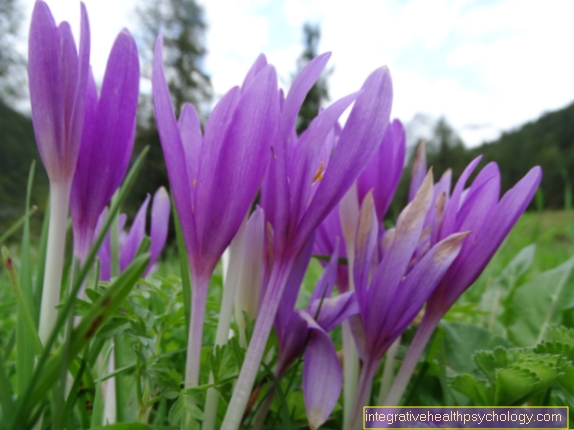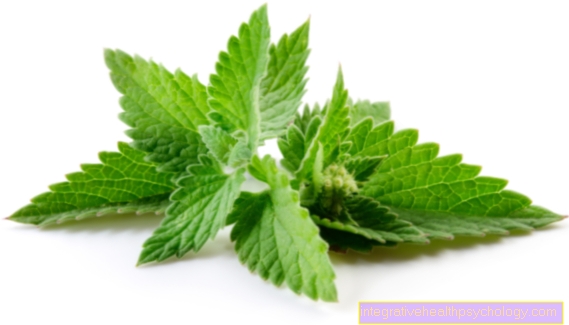Passiflora (Passiflora incarnata)
Passion Flower Family
Common name: Passion flower
Plant description
.jpg)
Native to America and the East Indies. Also drawn in cultures. Creeping, grooved stems with corkscrew-like twisted shootsthat arise on the leaf axils.
Stalked leaves, oblong, ovate and spiky. The big, very beautiful flowers, white or purple colored, stand on long stems and reach a diameter of up to 8 centimeters.
From this develop yellowish, oval berries with numerous seeds.
Plant parts used medicinally
The herb without the roots. During the flowering period, the above-ground herb is harvested and gently dried. The homeopathic remedy is obtained from the fresh herb.
Ingredients: Flavonoids with vitexin, coumarin, umbelliferone, harmine.
Medicinal effect and application
The drug becomes one calming effect attributed. She contributes nervous restlessness, sleep disorders, States of excitement and nervous complaints in the Gastrointestinal tract.
preparation
Passion flower tea: Take 1 teaspoon of the drug and pour a large cup of boiling water over it, let it steep for 10 minutes, strain.
It is best to drink if you have trouble sleeping half an hour before bedtime a cup.
Combination with other medicinal plants
Passionflower can especially be used in conjunction with hop, valerian and Johannis herbs Favorably influence sleep disorders. You can mix in equal parts. Prepare as above.
Use in homeopathy
The remedy Passiflora has a strong calming effect in the mother tincture and is prescribed for sleep disorders. It can also bring relief from nervous restlessness.
Side effects are not to be feared.





























